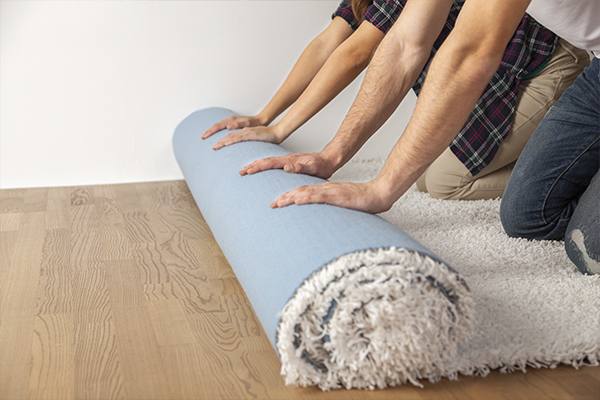How To Store Rugs Without Ruining Them
Ah, rugs – one home décor element that makes any room a bit homier and comfier. Whether you’re moving, doing some renovations or just changing décor in your home, there will come time to store your favorite rugs and carpets so you can use them again when it’s appropriate.
Self-storage mistakes are so common and can happen to every single one of us. Knowing how to properly protect your carpets and rugs can save you so much money. And, what’s even better it’s not as complicated as you might think. Try these basic tips to avoid damaging your rugs while keeping them in storage.
Clean And Dry
The most basic storing step homeowners often forget about is cleaning the rug before putting it in storage. The least you could do is remove the dust and vacuum it. However, washing it with special carpet detergent, removing stains, and letting it completely dry is the best way to go.
The drying tip is the key here – never store a rug unless it’s 100% dry. Professional rug cleaners have massive (and expensive!) centrifuge machines for drying, as well as all the latest cleaning equipment and detergents, and sometimes it’s best to let them do the job for you. You will thank yourself when you take your favorite rug out of your storage after a few months!
Use Insect Repellent
Imagine taking your family heritage rug out of the storage only to see it destroyed! There are so many insect repellent products sold on the market that will repel or destroy insects, moths and pests threatening to damage your carpet. Make sure that you know the material of the rug before purchasing a repellent. Different types of products are meant for different fabrics and you shouldn’t compensate here. Also, always read the instructions before using it.
Roll It
Folding a rug is not the smartest idea. So many homeowners make this huge rug mistake without even knowing. Instead, roll it to protect it from damage and cracks. Use your hands to figure out where’s the top and where’s the bottom of the rug. Go through the fibers and you’ll know the best direction to roll in.
When it comes to the surface, it’s best if you roll rugs with linings or the ones made of silk with the fiber facing outwards. For wool rugs or the oriental designs, the pile should be facing inwards. Make sure that you’re not rolling them too tight, you can easily damage the lining.
Avoid Plastic
The best rug tip you’ll ever get is not to ever wrap it in plastic. Even if you’re storing it for a few days, plastic is a material that doesn’t let carpets and rugs breathe.
The best option is paper or fabric. To properly protect the rug, you have to avoid printed paper.
The protective fabric or paper should wrap the carpet at least one and a half times, and also be long enough to wrap around both ends. The best choices that professionals recommend are Tyvek paper, muslin, cotton sheeting paper, brown craft paper and more.
Choose The Best Spot
Finding the best storage spot is not as easy as it sounds. Once you’ve rolled the rug, you need to place it somewhere where it’s not hot, humid, or exposed to sunlight. At the same time, it should be placed standing up or on a surface previously lined with wrapping paper. Don’t add other stored items on top of it, because it can change the shape, damage the glue and stitching, cause cracks and more.
Garages, basements, and attics are the most popular choices of homeowners but are completely wrong at the same time. These places tend to feature moisture, direct sunlight, and let’s not forget about pests and insects. Look for a dry room, without direct natural light and constant temperature. Self-storage might be the safest option.
Check-Ups
The fact that you’ve rolled, wrapped and stored the carpet doesn’t mean that your job stops there. To make sure that you’ve done everything right you should do a check-up every month or month and a half.
This means unpacking the rug, unrolling it and letting it breathe for some time, before properly storing it again. This step is extremely important so that you’re sure there aren’t any insects or pests ruining it. If every month sounds like a lot of work, doing this step at least twice a year should be your priority.
Conclusion
Educating yourself with some very easy and cheap storage tricks will help you prolong the life of home items. Rugs and carpets can be very tricky, but after putting all these tips to work you shouldn’t worry about any damage.
This article is written by Tony from Love Your Rug.
Share
